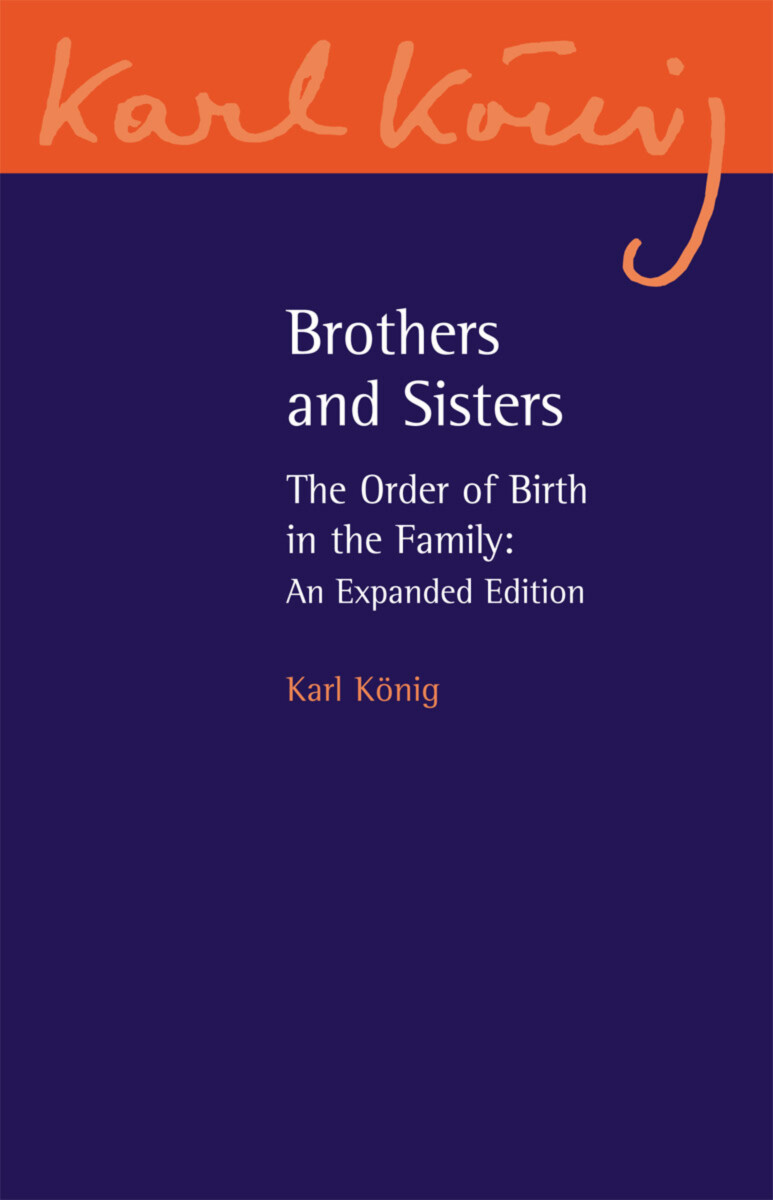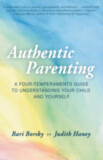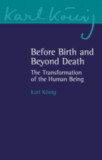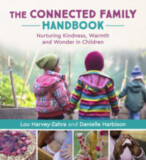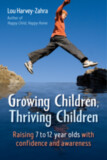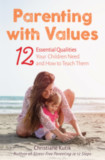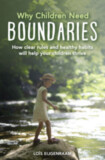Contributions by Alfons Limbrunner
Introduction by Richard Steel
Series edited by Richard Steel
- Publisher
Floris Books - Published
20th September 2012 - ISBN 9780863158469
- Language English
- Pages 160 pp.
“There can be no doubt that special traits of character and mental make-up are found in children and adults who belong to the different ranks in the order of birth.”
In this classic work, Karl König attempts to explain the various characteristics of those born first, second, and third, without losing sight of the tremendous individuality of the human being.
Just as our environment shapes our language, social behavior and mannerisms, so, too, our place in the family also determines how we encounter life.
This book is a fascinating handbook for parents, teachers, and caretakers. Over the years it has become a definitive reference on the subject of child development.
This newest edition in the Karl König Archive series includes a new introduction by series editor Richard Steel; an extended introduction by Karl König; two new essays (”The Two Sisters” and “Brother and Sister”); lecture notes and transcriptions by Karl König, and an essay by A. Limbrunner on the significance for today of König's work on family order.
“Readers will approach this book from their respective family positions, which in my case is the first of four. It was striking to see the first-born characterized as a defender of faith, tradition and the family against new ideas and action. Surely the balance is critical here.”
—David Lorimer, Scientific & Medical Network“For me the most telling aspect was how much König's descriptions of the first, second, third child and so on fitted so closely with characteristics we'd noticed in our children.”
—Education Otherwise“A pleasure to read this important work again.”
—Camphill News NI“A profound and insightful book.”
—Perspectives“Fascinating.”
—Desmond Morris, author of The Naked Ape
C O N T E N T S:
An Evergreen Piece of Pioneering Work, by Alfons Limbrunner
Brothers and Sisters
• Introduction
• The First Child
• The Second Child
• The Third Child
About this Edition, by Richard Steel
Work on a Future Edition
• Brother and Sister (Fighting the Dragon)
• The Two Sisters
Notes for Lectures
From König’s Letters
Introductions to Other Editions
Notes
Bibliography
Index
Karl König
Dr. Karl König (1902–1966) born on September 25th 1902 in Vienna, Austria, the only son of a Jewish family who owned a shoe shop. He studied zoology, biology, and medicine at the University of Vienna, graduating in 1927. During his studies on embryology, König encountered the works of Rudolf Steiner through Goethe's scientific writings. He immediately identified with Steiner and was soon acquainted with a number of his followers, including Ita Wegman.
Upon graduation, König was offered several high-profile positions in Vienna, but instead accepted an invitation from Ita Wegman to join her clinic in Arlesheim, Switzerland.
König's time at the Clinic would shape the Camphill movement. It was here that he met his wife and co-founder, Tilla Maasberg, and it was here that he first witnessed the Advent Garden. During this festival, during which children with learning disabilities circle a spiral of moss, lighting a candle from a large central beacon, he promised to dedicate his life “to the care and education of these children.”
Following his time at Arlesheim, König moved to Germany and was involved in founding the Pilgramshain Institute—one of the early curative educational (therapeutic) centers based on anthroposophy. However, due to the political pressure of the Nazi regime, König was forced to leave Germany in 1936. He returned to Vienna, where he operated a successful medical practice and led anthroposophic study groups until 1938.
Fleeing Austria after Nazi annexation in 1938, König became part of a small group of doctors, teachers, and artists to be granted political asylum in the United Kingdom in 1939. König moved to Aberdeenshire, Scotland, where this group founded a home for children with learning disabilities, which became the beginning of the Camphill movement. After World War II, more schools were established, as well as curative education villages for adults with disabilities, based on the ideal of working together as a community.
In the following decades, König's Aberdeenshire community grew and expanded into Britain, Europe, and North America, becoming the Camphill movement we know today. During this period, König worked tirelessly to help children and adults with special needs through publications, talks, and seminars—as well as by establishing communities around the world.
Karl König returned to Germany in 1964 and began yet another community, this one near Überlingen, on Lake Constance (Bodensee), where he died in 1966.


